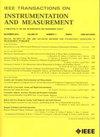Floating-Electrode-Based Microchip Enabling Multimodal Manipulation and Physical Parameters Measurement of Cells/Particles
IF 5.6
2区 工程技术
Q1 ENGINEERING, ELECTRICAL & ELECTRONIC
IEEE Transactions on Instrumentation and Measurement
Pub Date : 2025-02-18
DOI:10.1109/TIM.2025.3541705
引用次数: 0
Abstract
Cell/particle manipulation has made significant strides in fields such as biomedical research, chemical analysis, and materials science, emerging as a crucial discipline. This article introduces an innovative microchip featuring a wavy floating electrode structure, capable of multimode cell/particle manipulation. The floating-electrode-based microchip enabling different modal manipulation of cells/particles can be realized by simply adjusting the voltage and frequency parameters of the driving signal. Vortices can be generated at the edges of floating electrode in the low-frequency range of the driving signal, orbital revolution of popular cells and out-of-plane rotation of single cells can be achieved by adjusting the voltage amplitude. The orbital revolution can be used for the enrichment of cells/particles, while the out-of-plane rotation provides the possibility to reconstruct the 3-D model of single cells and measure the physical parameters (ellipticity, surface area, and volume). As the frequency increases, the dielectrophoretic forces gradually become dominant, enabling the effective separation of cells/particles with different electrical properties. The separation feasibility of the microchip was verified by the effective separation of particles and yeast cells. Through numerical simulation and experiments, the microchip is proved to have the advantages of simple structure, convenient operation, and multimodal manipulation of cells/particles.求助全文
约1分钟内获得全文
求助全文
来源期刊

IEEE Transactions on Instrumentation and Measurement
工程技术-工程:电子与电气
CiteScore
9.00
自引率
23.20%
发文量
1294
审稿时长
3.9 months
期刊介绍:
Papers are sought that address innovative solutions to the development and use of electrical and electronic instruments and equipment to measure, monitor and/or record physical phenomena for the purpose of advancing measurement science, methods, functionality and applications. The scope of these papers may encompass: (1) theory, methodology, and practice of measurement; (2) design, development and evaluation of instrumentation and measurement systems and components used in generating, acquiring, conditioning and processing signals; (3) analysis, representation, display, and preservation of the information obtained from a set of measurements; and (4) scientific and technical support to establishment and maintenance of technical standards in the field of Instrumentation and Measurement.
 求助内容:
求助内容: 应助结果提醒方式:
应助结果提醒方式:


